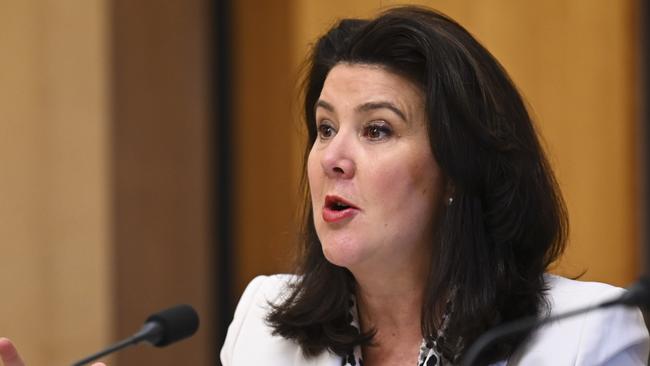More than half the public service have working from home agreements
The CPSU says the Commonwealth can achieve major savings and reduce rental costs by encouraging more public servants to work from home.

The public sector union says the commonwealth would achieve major property savings and reduce rental costs under negotiations aimed at allowing more staff to work from home, as it urged the government to lift its revised 11.2 per cent pay offer to 20 per cent over three years.
Community and Public Sector Union national secretary Melissa Donnelly said working from home arrangements were the “most important conditions issue that our members want to see progress on” and pushed for public servants to be dealt in to any talks about how the savings could be spent.
However, the government downplayed the idea that property savings could be used to fund wage increases, noting that government leases were long term and could not easily be broken.
Last year’s Australian Public Service census showed a significant increase in public servants working from home, with 55 per cent of 120,662 respondents saying they had such arrangements – a rise of 9 per cent since 2021.
New data also revealed more than 17 per cent of Finance Department staff already work four out of every 10 days from home, while the Department of Infrastructure has nearly 37 per cent of its staff working from home for at least two days a week.

The Department of Infrastructure said the cost of renting office space for its employees amounted to $24m a year, with opposition finance spokeswoman Jane Hume saying “how do we know that the buildings that taxpayers are paying for aren’t lying empty while one-third … of people work from home two days a week?”
The Finance and Infrastructure Departments also confirmed that 31 per cent and 63 per cent of staff respectively had signed up to working-from-home agreements.
“I think that there are definitely property savings in this for the commonwealth. I wouldn’t like to put a number on it,” Ms Donnelly said.
“Where there are savings around property and other associated costs that arise from this, this should be part of the discussion from employees about how you share the benefits of those savings.
“What we have found over a number of years is that productivity is at least as good if not improved with working from home.”
Ms Donnelly said the other benefit of working from home was the ability to “attract and retain a broader share of the labour market geographically” so more public service jobs could be located outside Canberra and other capital cities.

On pay, she said the government could do better than its revised 11.2 per cent pay offer over three years, which would provide for increases of 4 per cent, 3.8 per cent and 3.4 per cent from next March.
While a vote of about 15,000 CPSU members in September revealed that 51.9 per cent supported the government’s offer, Ms Donnelly said this was not sufficient and that “our union thinks the government can do better than a narrow majority. We need to aim a bit higher.”
She said the union was standing by its claim for a 20 per cent pay increase over three years and flagged further industrial action in support of the wage push, including a strike next week by meat inspectors and on-plant veterinarians employed by the Department of Agriculture, Fisheries and Forestry.
CPSU members in the Fair Work Ombudsman and the Department of Employment and Workplace Relations also went on strike on Thursday in the fourth round of industrial action taken by the union.
The Australian Public Service Commission has spent more than six months in the bargaining process with 10 unions and 275 bargaining representatives to arrive at a set of common terms and conditions covering 90 topics.

Finance Minister Katy Gallagher said that, while it was not the government’s preference, “we can put an offer to the APS staff … We want to work through the union, but they’ve had their vote”.
“More than half of their membership agreed with the offer that was being put. We know from the representations we’re getting from APS employees that they are wanting to settle this deal. And so that remains an option,” she said.
Some of the common terms and conditions that have been agreed to include no caps on the number of days public servants can request to work from home and a bias for agencies to approve requests.
First Nations staff can also access six days leave over two years for cultural purposes while, generally, employees can have up to three days’ paid cultural leave per year for religious and cultural obligations.
There is also an ability to swap public holidays on cultural or religious grounds and to take up to 20 days paid leave to volunteer in emergency management duties. Leave entitlements are portable so that annual leave and personal carers leave can be shifted from one APS job to another.








To join the conversation, please log in. Don't have an account? Register
Join the conversation, you are commenting as Logout